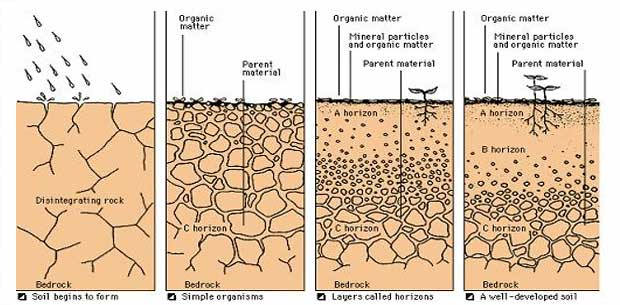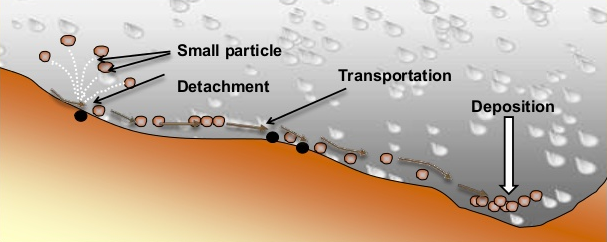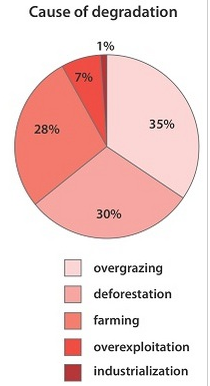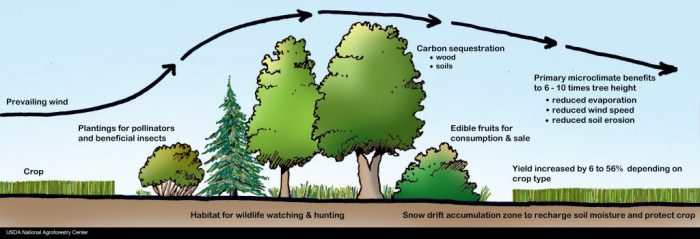Did you know that it can take up to 1,000 years for the earth to produce just three centimeters of soil?
For fertile soil to form, the land has to accumulate enough parent material, which is a type of deposit on the earth’s surface. Usually, soil is the result of weathered bedrock and smaller materials that have gathered in a given area. Over time, natural elements like the sun, rain, and the presence of creatures help transform this material into the fertile topsoil.
Soil formation is a long and complicated process — and yet, soil is disappearing at alarmingly fast rates. There’s a bleak prediction that the world could run out of fertile topsoil in just 60 years, which is the most fertile layer of soil in which vegetation is grown. Since topsoil is a finite resource, humans must avoid any further soil deterioration by slowing down the causes and practicing better environmental habits.
Understanding Soil Degradation:
Soil degradation is the loss of fertile soil, which makes it impossible for anything to grow in that area. It comes from depleted resources like organic matter, fertility, and nutrients. Soil that has wholly deteriorated can destroy local ecosystems and harm surrounding wildlife, including plants, animals, and humans.
How Is Soil Deterioration Harmful?
With half of the topsoil gone over the past 150 years, the earth has less range than ever before to provide food, grow crops, and act as the fundamental base of all living things. There are three significant ways that soil deterioration will affect all living things, which is the loss of soil structure, nutrient depletion, and desertification.
Reason #1: Loss of Soil Structure
Soil structure is the arrangement of solid parts and pore parts within the soil. Soil structure has a major influence on water and air movement, biological activity, and seedling emergence. Soil is a complex system that is affected by several environmental factors, like erosion, deforestation, and urbanization. Without interference, the total loss of soil structure leads to nutrient depletion.
Reason #2: Nutrient Depletion
The amount of available nutrients determines the soil’s fertility. When soil loses its nutrients, it dries out and becomes unusable land, often leading to desertification. Nutrient depletion can be a result of both natural and human activities.
Reason #3: Desertification
Desertification can wipe out acres of arable land and occurs when once-fertile land loses nutrients, dries out, and becomes unable to support any means of growth. This stage of infertility ultimately stems from poor soil conservation and management methods.
What Causes Soil Degradation?
Soil degradation is caused by many factors, with some naturally-occurring, while human activities cause others. The leading causes of soil deterioration are wind and water erosion, deforestation, and urbanization.
Cause #1: Soil Erosion
Soil erosion is the displacement of the top layer of soil and is often caused by wind and water forces. Although these are naturally-occurring elements of nature, too much erosion can lead to soil depletion.
Wind detaches fertile topsoil by transporting it away to a different location. Water washes away mass amounts of dirt through rain, flooding, creating runoff and deposition.
Cause #2: Deforestation and Overgrazing
Overgrazing and deforestation are the leading human activities that cause soil depletion. Due to the demand for food and meat products, pastures are being expanded and overgrazed by cattle.
Overgrazing occurs when crops and plants aren’t given enough time to recover in between grazing sessions. This can result in deforestation, which is the removal of cover crops (such as plants, grass, shrubs, and trees). Sustainable agriculturists should practice responsible grazing practices, including limiting the number of animals grazing in one area.
Cause #3: Urbanization
Urbanization is when an area becomes more urban through higher-density populations and commercial, residential, and industrial buildings. Major indicators of urbanization are large metropolitan cities. However, this way of living creates mass amounts of pollution and less agricultural productivity, indirectly causing soil deterioration.
How Do You Prevent Soil Deterioration?
Preventing any further soil deterioration can promise a better future. There are many actions that humans can take to increase soil’s presence and fertility, including planting more vegetation, practicing better agricultural methods, and enforcing erosion control.
Solution #1: Increase Vegetation
Vegetation like crop covers and windbreaks help decrease soil erosion and keep soil fertile and healthy. Some examples might include:
- Trees
- Flowers
- Shrubs
- Creeping plants
These plants act as the protectors of the fragile topsoil by shielding it from harsh winds and rainfall. Planting vegetation also increases the soil’s fertility by increasing natural plant growth, preventing weeds, and cycling nutrients back into the earth. Introducing crop covers is one of the most natural and beneficial ways to help avoid soil deterioration.
Solution #2: Better Agricultural Methods
One of the leading causes of deforestation is due to irresponsible agricultural methods. The best way to practice better farming is ensuring the soil is healthy, avoid overgrazing, and strip cropping. Strip cropping is a method of agriculture that involves cultivating a field, used when a slope is too steep and can be used to improve and maintain the soil’s health to reduce the rate of decay.
Solution #3: Enforce Erosion Control
Although soil erosion is a naturally-occurring phenomenon, it is a major influence on soil deterioration. You can start doing your part by enforcing erosion control in your backyard or for major projects. Erosion control supplies like blankets, mulch, seed and planting aids, wattles, and tackifiers are excellent options to consider to help protect deteriorating soil, especially if the land is sloped.
Conclusion
Soil degradation is a major environmental issue that affects all living things. Without fertile soil, there is no arable land for farming and growing crops. Available food sources may become scarcer, and many animals or creatures may begin to face endangerment or extinction. Humans must continue putting in the effort to conserve soil and prevent deterioration, which can be by increasing vegetation, better agricultural practices, and enforcing erosion control methods.
Granite Seed carries a variety of erosion control products, including seeding aids and crop covers like flowers, trees, and shrubs. Contact us today so we can help implement erosion control into your next project.



